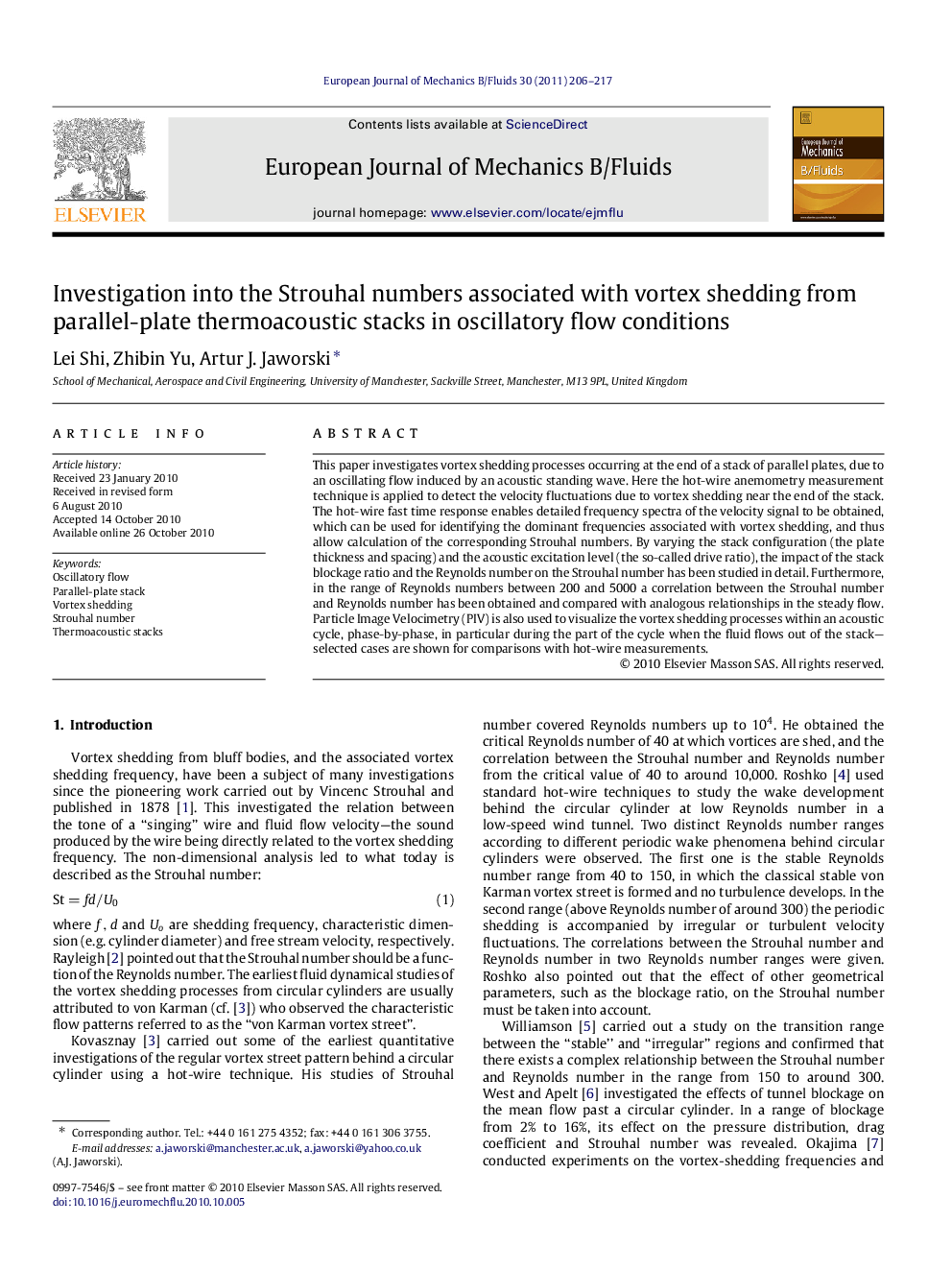| Article ID | Journal | Published Year | Pages | File Type |
|---|---|---|---|---|
| 650632 | European Journal of Mechanics - B/Fluids | 2011 | 12 Pages |
Abstract
This paper investigates vortex shedding processes occurring at the end of a stack of parallel plates, due to an oscillating flow induced by an acoustic standing wave. Here the hot-wire anemometry measurement technique is applied to detect the velocity fluctuations due to vortex shedding near the end of the stack. The hot-wire fast time response enables detailed frequency spectra of the velocity signal to be obtained, which can be used for identifying the dominant frequencies associated with vortex shedding, and thus allow calculation of the corresponding Strouhal numbers. By varying the stack configuration (the plate thickness and spacing) and the acoustic excitation level (the so-called drive ratio), the impact of the stack blockage ratio and the Reynolds number on the Strouhal number has been studied in detail. Furthermore, in the range of Reynolds numbers between 200 and 5000 a correlation between the Strouhal number and Reynolds number has been obtained and compared with analogous relationships in the steady flow. Particle Image Velocimetry (PIV) is also used to visualize the vortex shedding processes within an acoustic cycle, phase-by-phase, in particular during the part of the cycle when the fluid flows out of the stack-selected cases are shown for comparisons with hot-wire measurements.
Related Topics
Physical Sciences and Engineering
Chemical Engineering
Fluid Flow and Transfer Processes
Authors
Lei Shi, Zhibin Yu, Artur J. Jaworski,
